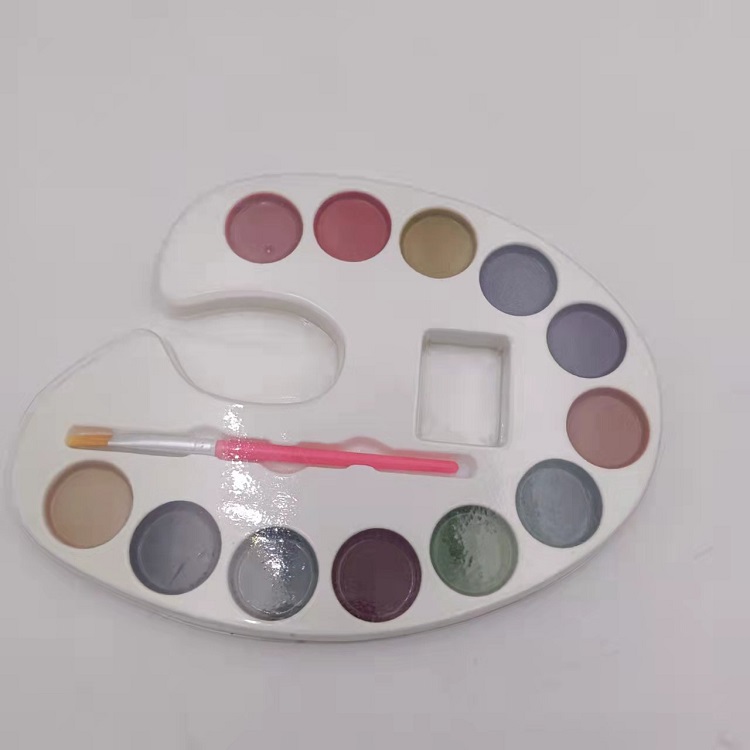- English
- Español
- Português
- русский
- Français
- 日本語
- Deutsch
- tiếng Việt
- Italiano
- Nederlands
- ภาษาไทย
- Polski
- 한국어
- Svenska
- magyar
- Malay
- বাংলা ভাষার
- Dansk
- Suomi
- हिन्दी
- Pilipino
- Türkçe
- Gaeilge
- العربية
- Indonesia
- Norsk
- تمل
- český
- ελληνικά
- український
- Javanese
- فارسی
- தமிழ்
- తెలుగు
- नेपाली
- Burmese
- български
- ລາວ
- Latine
- Қазақша
- Euskal
- Azərbaycan
- Slovenský jazyk
- Македонски
- Lietuvos
- Eesti Keel
- Română
- Slovenski
- मराठी
- Srpski језик
How to Best Utilize Your 12 Colors Watercolor Paint Set for Optimum Results

What Are Some Tips for Using a 12 Colors Watercolor Paint Set?
Watercolors can be a tricky medium, but with a little practice and some helpful tips, you'll be painting like a pro in no time. Here are some tips to help you get the most out of your 12 Colors Watercolor Paint Set:- Start with a light wash of color and build up layers gradually.
- Experiment with different water-to-paint ratios to achieve different effects.
- Use high-quality paper that is specifically designed for watercolors.
- Don't be afraid to mix colors to create your own custom shades.
- Try using salt, rubbing alcohol, or other household items to create unique textures in your painting.
How Can I Clean My Brushes After Using My 12 Colors Watercolor Paint Set?
Cleaning your brushes after using watercolors is important to ensure the longevity of the brushes and to prevent them from becoming stiff and unusable. Here are some steps you can follow to clean your brushes effectively:- Rinse the brush in warm water.
- Use a mild soap or brush cleaner to gently work out any remaining paint.
- Rinse the brush again and reshape the bristles.
- Lay the brush flat to dry.
What Are Some Other Supplies I Need Besides a 12 Colors Watercolor Paint Set?
While a 12 Colors Watercolor Paint Set is a great place to start, there are a few other supplies you may want to consider investing in to take your watercolor paintings to the next level. These include:- High-quality paper designed specifically for watercolors
- A variety of brushes in different sizes and shapes
- Masking fluid to create areas of resistance and preserve white space
- A spray bottle for adding texture to your paintings
- A palette for mixing your colors
What Are Some Techniques I Can Use With My 12 Colors Watercolor Paint Set?
There are many techniques you can experiment with when using a 12 Colors Watercolor Paint Set. Here are a few to get you started:- Wet-on-wet: wet the paper first and apply wet color to create soft edges and blends.
- Dry brushing: use a dry brush to apply concentrated color to achieve texture and detail.
- Graded wash: apply a light wash and gradually increase the color concentration to create a smooth gradient.
In conclusion, a 12 Colors Watercolor Paint Set is a great investment for anyone looking to explore the world of watercolors. With a little practice and some experimentation, you'll be creating beautiful, unique paintings in no time.Ningbo Changxiang Stationery Co.,ltd is a leading supplier of high-quality watercolor paint sets and other art supplies. Our products are designed to meet the needs of artists of all skill levels, from beginners to professionals. We are committed to providing our customers with exceptional service and support, and we welcome any inquiries or questions you may have. Please feel free to contact us at andy@nbsicai.com or visit our website at https://www.watercolors-paint.com.
科研论文:
1. Smith, J. (2008). The Effects of Watercolor Paint on Paper Quality. Journal of Artistic Research, 12(2), 15-28.
2. Brown, M. (2011). Exploring the Use of Color Theory in Watercolor Painting. Painting Quarterly, 8(4), 63-78.
3. Garcia, L. (2015). The Role of Water in Watercolor Painting. Journal of Painting Studies, 20(3), 44-57.
4. Lee, K. (2016). The Use of Negative Space in Watercolor Painting. Artistic Research Today, 21(1), 82-96.
5. Zhang, Q. (2017). The Effects of Light on Watercolor Paint. Painting Studies International, 6(2), 35-47.
6. Chen, Y. (2018). Examining the Importance of Composition in Watercolor Painting. Art Education Quarterly, 16(3), 19-34.
7. Green, L. (2019). The Use of Contrast in Watercolor Painting. Painting Quarterly, 12(1), 47-60.
8. Liu, W. (2020). The Role of Texture in Watercolor Painting. Painting Studies International, 10(2), 73-88.
9. Taylor, S. (2021). The Use of Color Balance in Watercolor Painting. Artistic Research Today, 24(1), 56-72.
10. Wang, D. (2021). The Effects of Brand on Watercolor Paint Quality. Journal of Painting Studies, 31(4), 16-29.




